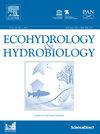评估巴基斯坦诺谢拉地区受洪水影响地区获得安全饮用水的情况:实现可持续发展目标 6.1 的案例研究
IF 2.2
4区 环境科学与生态学
Q2 ECOLOGY
引用次数: 0
摘要
获得安全饮用水是可持续发展目标(6.1)最重要的具体目标之一。然而,气候变化已成为获取安全用水的重大挑战。气候引起的降雨模式变化造成许多水文气象灾害,如干旱、洪水和荒漠化。这些危害对供水系统构成重大风险,特别是在易受气候变化影响的地区。这些灾害的发生可能会破坏水文生态系统和供水基础设施,造成供水中断,污染水资源。因此,在任何灾害发生后评估获得安全饮用水的情况对于确保可持续管理至关重要。为此目的,目前的调查旨在评估受洪水影响的瑙谢拉区社区委员会获得安全饮用水的情况。抽样地点是根据具体标准有目的地选择的,使用Kobo收集工具对2%(564)的家庭进行了调查。使用世卫组织和联合国儿童基金会的标准程序评估了获取安全饮用水的六个参数,即可及性、可获得性、可负担性、可接受性、水质和公平性。估计结果将研究区供水设施分为安全管理(49.5% ~ 51.77%)、初级(17.59% ~ 47.92%)、有限(3% ~ 94.67%)和未改善(1.82% ~ 41.46%)。目前的结果提供了获得安全饮用水的状况,并使贫困家庭可视化,以便采取优先行动。这项研究表明,最近的洪水严重影响了安全饮用水的获取。目前研究中使用的方法和技术可用于监测可持续发展目标。目前的研究强调,在解决易受洪水影响地区获得清洁水的问题时,需要从气候变化的角度出发。它确定了未来研究和政策行动的关键因素。本文章由计算机程序翻译,如有差异,请以英文原文为准。
Assessing access to safe drinking water in flood-affected areas of District Nowshera, Pakistan: A case study towards achieving sustainable development goal 6.1
Access to safe drinking water is one of the most vital targets of sustainable development goal (6.1). However, climate change has become a significant challenge to safe water access. Climate-induced changes in rainfall patterns create many hydro-meteorological hazards such as drought, floods, and desertification. These hazards pose a major risk to the water supply system, particularly in areas vulnerable to climate change's impacts. The onset of these hazards may damage the hydro-ecological system and water supply infrastructure, cause an interruption in water supply, and pollute water resources. Therefore, assessing access to safe potable water after the onset of any hazard is crucial to ensure sustainable management. For this purpose, the current investigation aims to assess access to safe, potable water in flood-affected neighborhood councils of district Nowshera. The sample sites were purposively selected based on specific criteria, and 2 % (564) of households were surveyed using the Kobo collect tool. The six parameters, accessibility, availability, affordability, acceptability, water quality, and equity, were assessed for access to safe potable water using WHO and UNICEF standard procedures. The estimated results classified the study area access into safely managed (49.5 % to 51.77 %), primary (17.59 % to 47.92 %), limited (3 % to 94.67 %), unimproved (1.82 % to 41.46 %) water facilities. The current results provide the status of access to safe potable water and visualize the deprived households for priority action. This study indicates that recent flooding has significantly affected access to safe potable water. The methods and techniques utilized in current research can be used to monitor sustainable development goals. The present study highlights the need for a climate change perspective in addressing access to clean water in flood-prone areas. It identifies key factors for future research and policy action.
求助全文
通过发布文献求助,成功后即可免费获取论文全文。
去求助
来源期刊

Ecohydrology & Hydrobiology
Agricultural and Biological Sciences-Aquatic Science
CiteScore
5.40
自引率
3.80%
发文量
51
期刊介绍:
Ecohydrology & Hydrobiology is an international journal that aims to advance ecohydrology as the study of the interplay between ecological and hydrological processes from molecular to river basin scales, and to promote its implementation as an integrative management tool to harmonize societal needs with biosphere potential.
 求助内容:
求助内容: 应助结果提醒方式:
应助结果提醒方式:


